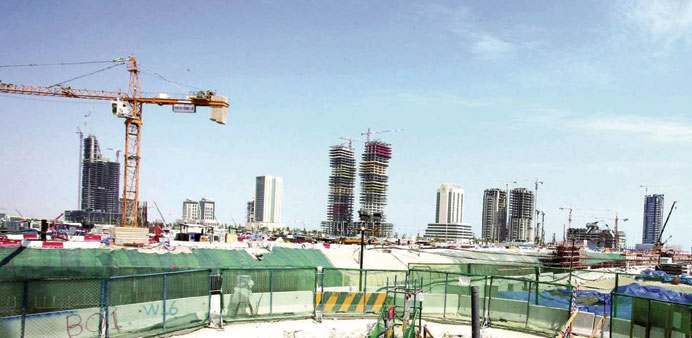It may be worth monitoring rising real estate prices to assess the possibility of a bubble in the sector, the new macroeconomic model of the Ministry of Economy and Commerce says.
By Santhosh V Perumal/Business Reporter
Qatar’s inflation is likely to accelerate over the 2020s and there is a need to monitor the “possible bubble” in the real estate sector, according to the new macroeconomic model of the Ministry of Economy and Commerce (MEC).
“Our scenario indicates inflation will likely accelerate over the 2020s, though the extent will largely depend on global and domestic factors,” the model said.
The downside scenario sees 2014-30 inflation increase given overall macroeconomic weaknesses and a failure to diversify to absorb shocks — inflation will reach peaks of over 6% per annum by 2030 in both ‘lost advantage’ and ‘energy plus’ scenarios with prices 14% higher than in 2010, it said.
Lost advantage assumes the global economy and oil prices as relatively soft and energy plus postulates the global economy and oil prices as relatively strong.
The model’s upside ‘true diversification’ and ‘new pockets’ scenarios see a much slower average increase of 2.7%-3.2% inflation over the period and 2030 prices less than 100% higher than in 2010.
True diversification assumes the global economy and oil prices as relatively strong and new pockets assumes the global economy and oil prices as relatively soft.
The downside scenarios predict higher inflation due to higher relative import prices against the upside scenarios, it said, adding likewise, differences in productivity also impact the top-line inflation rate.
“The large expected drop in 2015 is due to the oil and gas export price factor, as its price is expected to drop further in 2015,” the model said.
For the most part, prices have been relatively “stable” in Qatar over the past few years with monthly inflation at just 0.2% on average or an annualised rate of less than 3%, it said.
Qatar’s fixed exchange rate with the dollar allows the country to “import” low inflation from the US, which likewise has undergone very soft price increases in the recent years, given weak economic activity, according to the model. The past few months have also seen producer prices drop due to very steep declines in mining and manufacturing over 2014, it said.
Highlighting that one area in which prices have “skyrocketed” is through real estate; MEC said prices are 88% higher today than in mid 2011, despite rising real estate capacity (given an ongoing construction boom).
“It may be worth monitoring rising real estate prices to assess the possibility of a bubble in the sector as recent global experience has shown, even in real estate prices do not always continue an upward path,” it said.



